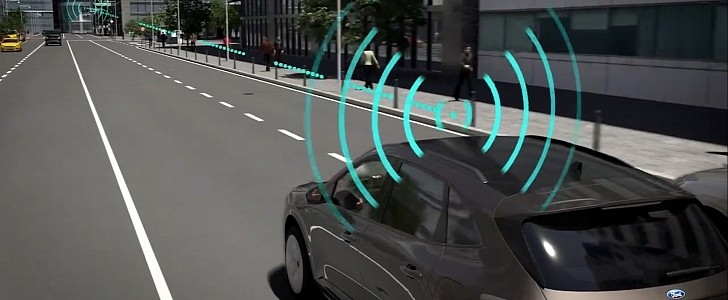Ford has decided to test out a new connected traffic light technology that could automatically give first responders the green light (literally) at intersections, while also offering clearer routes and reducing the risk of an accident caused by an ambulance, fire engine or police vehicle driving through a red light.
This connected traffic light system could also send timing information for red and green lights to other vehicles, in turn improving overall traffic flow and reducing congestion. This trial run was part of a larger project that involved testing automated and connected vehicles, as well as networked infrastructure in highway, urban and rural areas.
“Whether it’s a fire engine attending a blaze or an ambulance that is en route to an accident, the last thing anyone wants is for these drivers to be caught up among other vehicles waiting for the lights to change,” said Ford of Europe research engineer for Automated Driving, Martin Sommer.
While performing the test, Ford utilized a road with eight consecutive traffic lights in Aachen, Germany, and two stretches with three consecutive traffic lights just outside the city. The vehicle used was a Kuga plug-in hybrid model, equipped with onboard units for communicating with the infrastructure.
The crossover acted as both an ambulance as well as a passenger vehicle for different test scenarios.
During daily driving situations, the test vehicle received timing information for when the lights turned either green or red, before the Adaptive Cruise Control system took over and adapted the Kuga’s speed to help ensure that a higher proportion of traffic encountered a green light.
When the light was red, the vehicle’s speed was reduced well ahead of the junction in order to time its approach for when the light turned green. We’re only talking about a deceleration from 30 mph (48 kph) to 20 mph (32 kph), so nothing too drastic.
Communication between vehicles and traffic lights is made possible by C-V2X (Cellular Vehicle-to-Everything) technology, a platform that connects vehicles to not only infrastructure but other vehicles as well.
The U.S. carmaker tested this system as part of the Corridor for New Mobility Aachen-Dusseldorf (ACCorD) project, funded by the German Federal Ministry for Digital and Transport.
“Whether it’s a fire engine attending a blaze or an ambulance that is en route to an accident, the last thing anyone wants is for these drivers to be caught up among other vehicles waiting for the lights to change,” said Ford of Europe research engineer for Automated Driving, Martin Sommer.
While performing the test, Ford utilized a road with eight consecutive traffic lights in Aachen, Germany, and two stretches with three consecutive traffic lights just outside the city. The vehicle used was a Kuga plug-in hybrid model, equipped with onboard units for communicating with the infrastructure.
The crossover acted as both an ambulance as well as a passenger vehicle for different test scenarios.
During daily driving situations, the test vehicle received timing information for when the lights turned either green or red, before the Adaptive Cruise Control system took over and adapted the Kuga’s speed to help ensure that a higher proportion of traffic encountered a green light.
When the light was red, the vehicle’s speed was reduced well ahead of the junction in order to time its approach for when the light turned green. We’re only talking about a deceleration from 30 mph (48 kph) to 20 mph (32 kph), so nothing too drastic.
Communication between vehicles and traffic lights is made possible by C-V2X (Cellular Vehicle-to-Everything) technology, a platform that connects vehicles to not only infrastructure but other vehicles as well.
The U.S. carmaker tested this system as part of the Corridor for New Mobility Aachen-Dusseldorf (ACCorD) project, funded by the German Federal Ministry for Digital and Transport.








